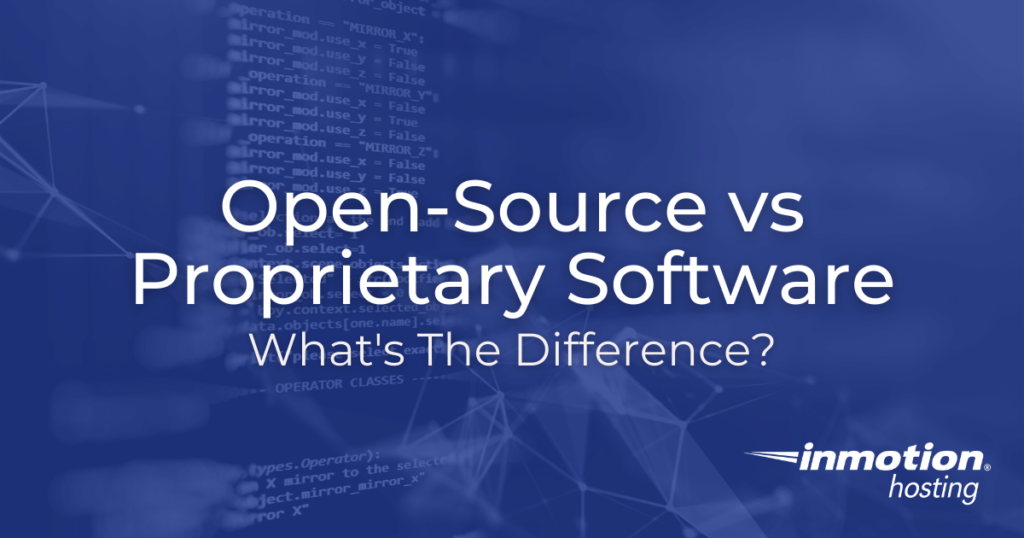
When researching software, one of the most important considerations most users make is whether or not a given piece of software is free or requires payment to use. This distinction is the difference between Open Source vs Proprietary software, terms commonly used to describe the monetary cost associated with particular pieces of software. In this article, we will explore the concept of Open Source vs Proprietary software and discuss some common examples of each.
Topics Include:
Open Source vs Proprietary Software
As mentioned previously, the main difference between open source and proprietary software is whether or not the software is free to use or requires payment to use. In addition, there are a few other ways that open source and proprietary software differ from one another.
In general, open source software is commonly developed and maintained by non-profit organizations whereas proprietary software is commonly developed and maintained by corporations or for-profit entities. As such, proprietary software typically has strict intellectual property protections that prevent unauthorized copying and distribution of the software. Organizations that provide proprietary software do not release the underlying software code known as the source code to the public, making it impossible for legitimate users to create new variants of the software.
In contrast, open source software can be freely copied and distributed without worrying about violating intellectual property rights. In addition to the software itself being freely available, the software’s source code is usually released for free distribution as well. By accessing the source code, users can create their own customized variants of the software in question and then freely distribute those variants as they see fit.
Key Differences
To summarize, the differences between Open Source and Proprietary software are as follows:
Open Source
- Free to Use
- Can be Freely Distributed
- Can be Customized
- Limited Intellectual Property Protections
- Usually Developed and Maintained by non-profit organizations
Proprietary
- Requires Payment to Use
- Requires Authorization for Distribution
- Cannot Be Customized
- Full Intellectual Property Protections
- Usually Developed and Maintained by for-profit entities
Examples of Open Source and Proprietary Software
One of the most common examples of open source software is the Linux operating system. An open source unix-like operating system, Linux has spawned dozens of variants such as Ubuntu, CentOS, Fedora, and many more. This software can be freely installed and the source code can be freely accessed and modified as users see fit, making it a versatile operating system for tech-savvy users.
One of the most common examples of proprietary software is the Windows operating system. As a piece of proprietary software, it typically requires payment to use and the source code cannot be readily accessed, copied, or modified. The software is maintained and distributed by the for-profit Microsoft corporation, with strict intellectual property protections in place to prevent unauthorized distribution, reproduction, or modification. While these limitations can enhance the security and stability of the software in question, they can be restrictive for users looking for a custom-tailored solution.
Experience unrestricted processing power on state-of-the-art hardware and your preferred operating system with Bare Metal Hosting!
Ubuntu, Debian, OpenSUSE, or Load your own OS
Unmanaged Hosting
Perfect for SysAdmins
Dedicated Resources
Now that we’ve explored the concept of open source vs proprietary software and discussed some common examples, hopefully you can be better prepared to decide which type of software is best for you.